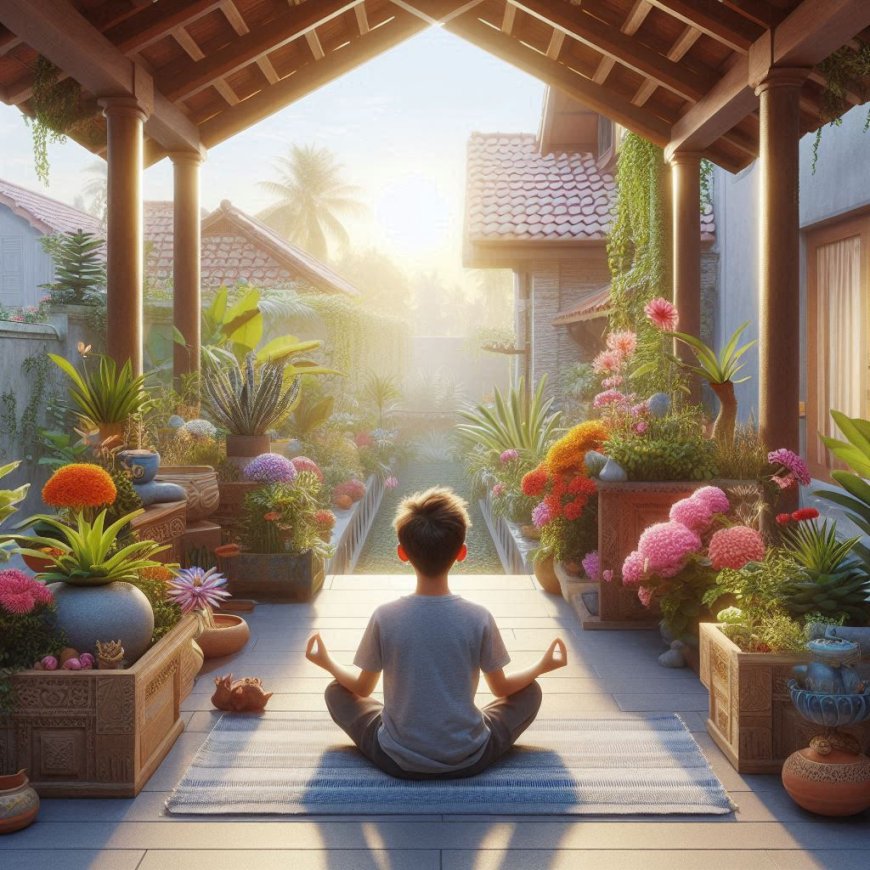How to meditate for beginners
Discover how to meditate in simple steps. Stay calm, happy, and focused with this easy guide for beginners.
Meditation is a practice that does not require much effort and helps you to calm your mind. Pay attention while doing meditation and be free of worries. Most people include meditation into their lifestyle to relief with stress, enhance mood, and be mentally fit. However, one does not have stress and you do not have to do this, even if the person has never meditated before. This article is provided as a guide in how to meditate for beginners. You will learn to meditate step by step.. Without any difficulties, it can be done by all.
What is Meditation?
Meditation can be defined as gymnastic exercises for the brain. The same way you train your muscles by going to a gym, working out is the way to train your mind through meditation, making your mind calm and alert. It is a peaceful period in which the attention ison inhaling and exhaling or on particular thoughts or an emotion.
Meditation helps you:
-
Relax when you feel stressed.
-
Concentrate better on school or work.
-
Stay calm in difficult situations.
It’s like giving your brain a little vacation.
Why Should You Meditate?
Meditation has many mental and physical benefits. Here are a few reasons why you should try it:
-
Reduces Stress
Meditation calms your mind and helps you feel less worried. -
Improves Focus
Regular meditation helps you pay attention better, whether you are reading, studying, or playing. -
Increases Happiness
Meditation can make you feel more positive and joyful. -
Helps You Sleep
If you have trouble sleeping, meditating before bed can help you relax and fall asleep faster. -
Boosts Health
Meditation can lower your blood pressure, reduce headaches, and even help your immune system.
How to Meditate: Step-by-Step Guide
Follow these simple steps to start meditating:
1. Find a Quiet Spot
Choose a place where you won’t be disturbed. It could be your room, a garden, or even a quiet corner in your house.
2. Sit Comfortably
You can sit on the floor, on a cushion, or in a chair. Keep your back straight but not stiff. If you prefer, you can lie down, but don’t fall asleep.
3. Close Your Eyes
Gently close your eyes to avoid distractions. If you don’t want to close your eyes, you can look at a spot on the ground.
4. Focus on Your Breathing
Pay attention to your breath. Breathe slowly through your nose, and then breathe out through your mouth. Feel the air entering and leaving your body.
5. Let Your Thoughts Come and Go
It’s okay if your mind starts thinking about other things. Don’t get upset. Just softly return the focus back to your breathing.
6. Start with a Few Minutes
If you are new start with 5 minutes of meditation. As you get better you can increase the time to 10 or 15 minutes.
Different Types of Meditation
There are different types of meditation. Here are some simple types you can try:
-
Breathing Meditation
This is the easiest type. Simply concentrate on your breath as you inhale and exhale. -
Body Scan Meditation
In this type, you pay attention to different parts of your body, starting from your head and moving down to your toes. This helps you feel more connected to your body. -
Guided Meditation
In guided meditation, someone helps you meditate by telling you what to do. You can listen to a recording or follow a video online. -
Mindfulness Meditation
This involves paying attention to the present moment. For example, notice how your feet feel on the ground or how the air feels on your skin. -
Loving-Kindness Meditation
This meditation helps you feel kind and loving. You think about sending good wishes to yourself and others. For example, you can say in your mind, “May I be happy. May my family be happy.”
Tips for Beginners
-
Be Patient
Meditation takes practice. At first, it might feel hard to stay focused but that’s okay. Keep trying, and things will get easier. -
Meditate Every Day
Try to meditate every day, even if it is only for a few minutes. You'll feel better the more you practise. -
Use a Timer
Set a timer to save you from always looking at the clock. This helps you relax and focus. -
Wear Comfortable Clothes
Wear clothes that are loose and comfy so you can sit or lie down without feeling restricted. -
Don’t Worry About Doing It Perfectly
There’s no right or wrong way to meditate. The goal is to feel calm and relaxed, so do what works best for you.
Meditation is a simple and powerful way to take care of your mind and body. It doesn’t take much time, and you don’t need any special tools. You only need a peaceful area and a few daily minutes.
Start small, be consistent, and enjoy the peace and happiness that meditation brings. With regular practice, you’ll feel more focused, relaxed, and ready to take on life’s challenges. So, why wait? Sit down, close your eyes, and begin your meditation journey today.
Also Read: Spiritual tourism in Nepal: Exploring the land of yoga and meditation
Frequently Asked Questions (FAQs) About Meditation
Q: Can kids meditate?
Yes, kids can meditate too. It’s a great way to help them relax and focus.
Q: What if I can’t stop thinking?
That’s normal. Meditation is not about stopping your thoughts but learning to notice them without getting caught up in them.
Q: When is the best time to meditate?
You can meditate anytime, but many people like to meditate in the morning to start their day feeling calm.
What's Your Reaction?








































